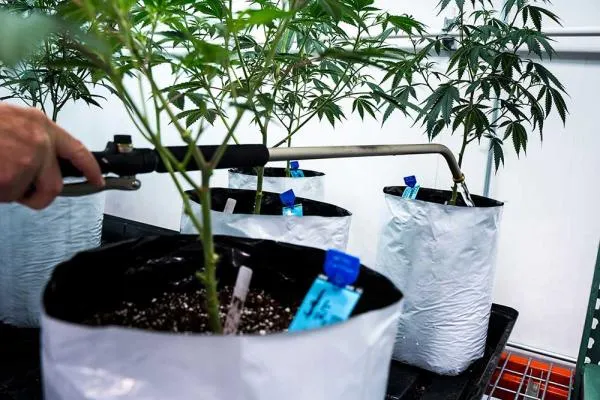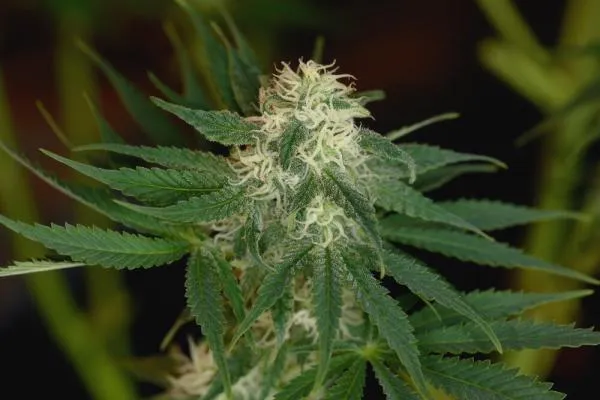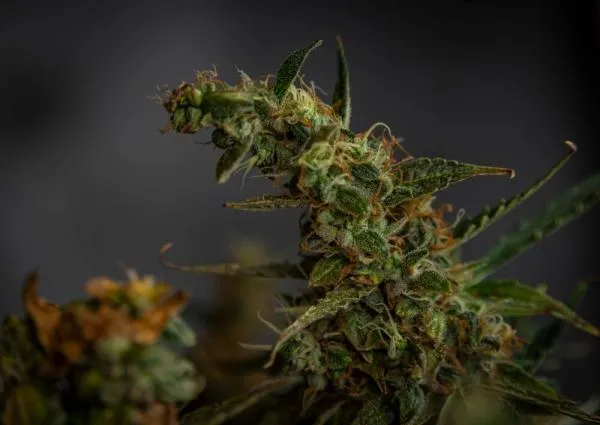A magnesium deficiency in a marijuana plant can be a serious problem. When a plant is suffering from it, the veins of the leaves will start to look light green or yellow in color. This is a stark contrast from the bright, vibrant green the leaves on a marijuana plant should be when it is healthy. If not treated right away, the plant may lose a lot of its leaves, which can greatly damage the plant. Luckily, treating magnesium deficiency in cannabis is relatively easy.
Why do marijuana plants need magnesium?
Magnesium is a mobile nutrient for cannabis plants, meaning that the plant will move it from leaf to leaf. As it does this, it will take magnesium from the older leaves and transport it to newer leaves. These take priority over leaves that have aged slightly. Therefore, a magnesium deficiency will likely start to appear on older, lower leaves first.
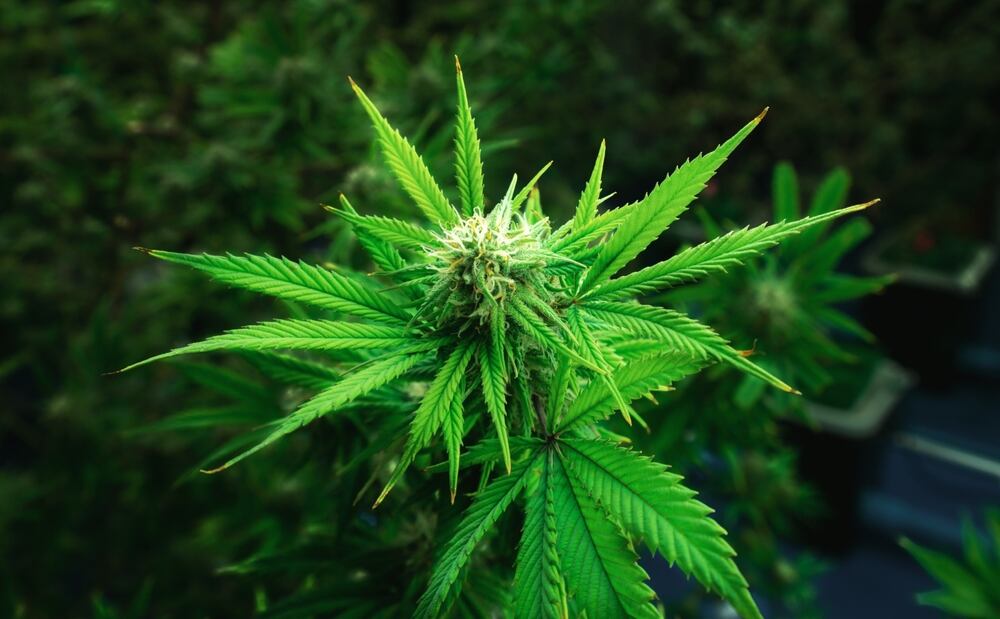
Magnesium is very important to marijuana plants. It promotes strong, healthy veins in the marijuana leaves, which will help transport other essential nutrients. Magnesium also helps the plant produce chlorophyll, while also breaking down certain enzymes. As well as protecting the plant against drought conditions and he absorption of phosphorus, a main nutrient for cannabis plants.
Marijuana plants will always need some levels of magnesium, but they will need more during the flowering stage of growth. This will help contribute to large flowers that are abundant in the original smells and flavors naturally present in the plant. This means that a magnesium deficiency is most likely to be seen during the flowering stage.
Magnesium deficiency is seen more when rowing in coco coir
A magnesium deficiency is most likely to appear in plants grown in coco coir. This is because coco coir doesn’t retain magnesium or calcium very well. Growers using coco coir must be extra vigilant in ensuring their plants are not showing signs of deficiencies.
What are the signs of magnesium deficiency in a marijuana plant?
Magnesium deficiency symptoms will start to appear four to six weeks before a plant starts showing symptoms. When a plants start to show signs of a magnesium deficiency, growers need to start treating it right away. As the plant will have already been sick for a while.
There are three main magnesium deficiency symptoms to look for:
- Veins on the older leaves of the cannabis plant that start to turn yellow or rust-brown.
- Older leaves that become dry, curl, and often drop off.
- A cannabis plant that has an overly sick appearance.
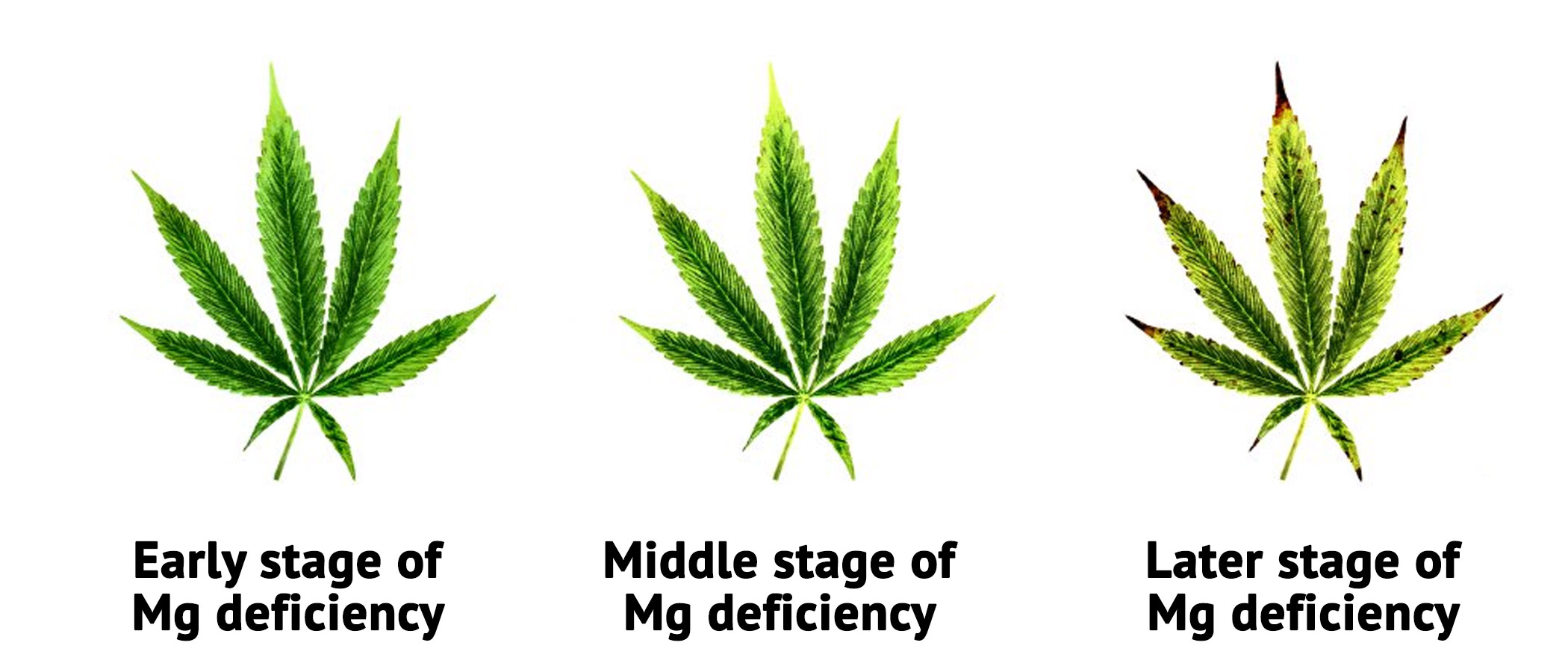
There are a few different causes of a magnesium deficiency. A grower may not be using enough, or any magnesium during the growth phase.
Or, they may simply be watering too much, which is removing vital amounts of magnesium from the plant.
In addition to these causes, the ph level of the soil may be too low, meaning that the plant cannot absorb the magnesium it’s been given. When this happens, the soil is too acidic and results in something known as magnesium lockout.
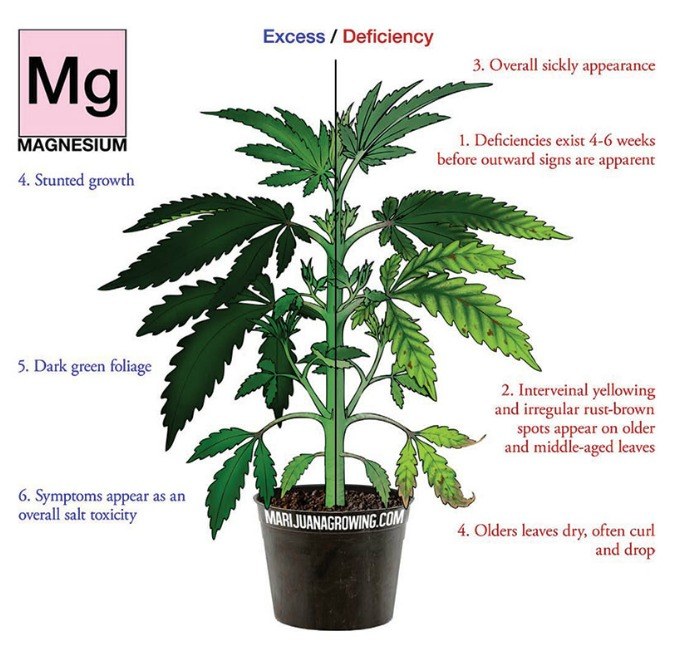
How to fix magnesium deficiency in a marijuana plant
Luckily for growers, there are a few different ways to treat a magnesium deficiency in cannabis.
The first is to ensure that the ph levels of the growing medium are high enough, so the medium can absorb the nutrients.
Growing in soil
Plants growing in soil should have a ph level above 5.5, while those in hydro and soilless mediums should have ph levels above 4.5. This is a great way to prevent a magnesium deficiency.
Once the ph levels have been corrected, magnesium deficiency symptoms can be treated.
- Plants a grown in soil, or any other medium that requires hand watering, should be flushed with ph-balanced water.
- The proper amounts of nutrients the plant needs should also be added to that water ahead of time.
- As the water starts to runoff the plant, that ph level of this water should also be checked. This will ensure that nothing already present in the grow medium is throwing the ph levels off.
Growing in hydroponics
You'll also need to start treating a deficiency problem by checking the ph levels of the water. This can be done by simply checking the reservoir.
- If the ph levels are too high or too low, the reservoir should be drained and filled with a newly mixed reservoir.
- At this point, many hydro growers wonder if they should add additional magnesium to prevent a deficiency in the future. While this can be done, the easiest way to do it is by adding epsom salts. These are already primarily made of magnesium and will dissolve in the hydro solution. Leaving the magnesium behind in the water.
These salts are also “of the earth,” meaning they are considered to be organic. This also makes them a great option for those growing organic cannabis.
After the proper steps have been taken to correct a magnesium deficiency, the veins and leaves should stop discoloring almost immediately. The leaves that have already been affected may even bounce back and become healthy once again. At this point, growers simply need to watch the plant and regularly inspect the leaves. Once they are assured that there is no longer a deficiency, they may remove the affected leaves if they wish. However, this is not necessary.
Magnesium when growing with autoflowers
Magnesium plays a central role in photosynthesis by constituting a core component of chlorophyll molecules. Without enough magnesium, autoflowers cannot effectively convert light into energy, which is critical for growth and development.
However, when it comes to feeding autoflowers, less is often more. This is mainly due to their smaller size and faster growth cycle compared to photoperiod cannabis plants. Autoflowers typically don't develop as large of a root system or foliage, which means they can't uptake and utilize nutrients at the same rate as larger plants. Consequently, they require lower volumes of nutrients, including magnesium, to avoid over-fertilization.
Over feeding autoflowers with magnesium can lead to nutrient imbalances and toxicity, which can stunt growth and badly affect the yield and quality of your bud. Therefore, it's crucial to closely monitor and provide a reduced and balanced nutrient mix that includes an appropriate amount of magnesium for optimal autoflower growth.
Conclusion
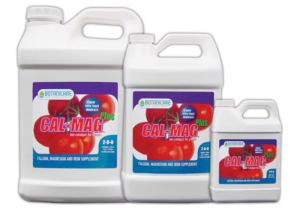
Many growers believe that a magnesium deficiency also results in a calcium deficiency. So they often treat them at the same time. Some even refer to this as a cal-mag deficiency and treat it with a product called Cal-Mag. However, this is a method that is somewhat controversial. While it works for some growers, for others it causes more problems.
Magnesium and calcium deficiencies are different in appearance and affect different parts of the plant. A deficiency in magnesium will affect the older, lower parts of the plant. But calcium deficiencies attack the newer, higher leaves of the plant. While some growers will see great results treating two deficiencies at once, others will not. Due to this, growers must always keep an eye on their plant when treating two deficiencies at the same time.





